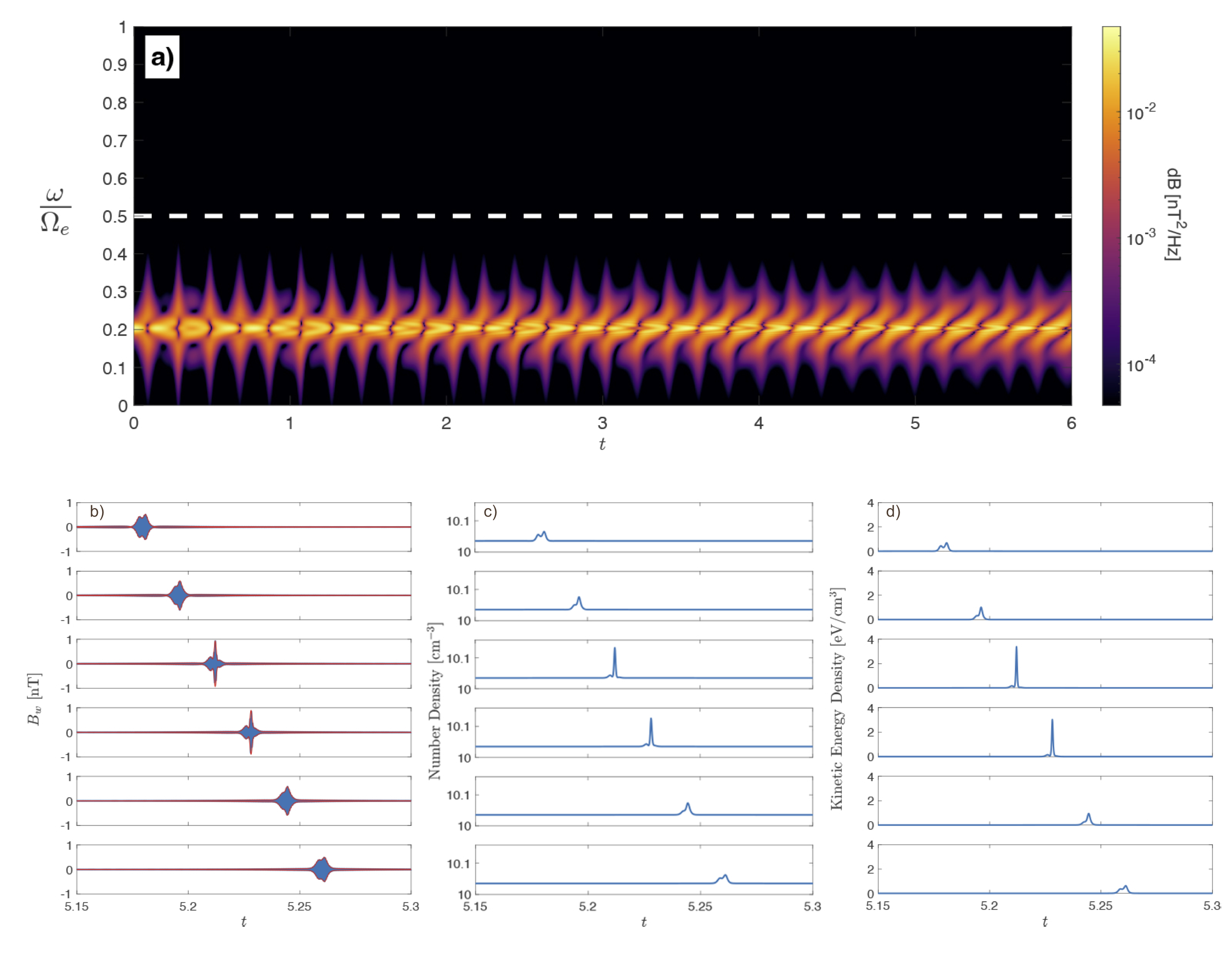MIST
Magnetosphere, Ionosphere and Solar-Terrestrial
The Nonlinear Evolution of Whistler-Mode Chorus waves: How Modulation Instabilities Can Be a Route to Tone Formation
By Daniel Ratliff (Northumbria University)
Whistler-Mode Chorus (WMC) waves remain a key contributor to the processes underpinning space weather modelling and have garnered considerable interest for their unique frequency properties (known as tones, where the frequency will rise or fall coherently). This role and phenomena are in no small part due to the interplay between these waves and the electrons present in the magnetosphere. At present, these wave particle interactions are difficult to model simultaneously effectively, and we normally restrict ourselves to the effect of one on the other – either a known wave is used to develop a particle distribution, or a supplied particle distribution generates WMC waves. Can we develop models that do both? And furthermore, can we develop a model that can reproduce this interesting set of frequency dynamics?
In our paper, we use formal perturbation techniques to derive a reduced, nonlinear model for (parallel propagating) WMC that is driven by wave-particle interactions via ponderomotive effects. Our first attempt, the famous Nonlinear Schrodinger equation, fails to generate tones – and so we dig a little deeper to find a term responsive for nonlinear frequency shifts. Surprisingly, this new term responsible for tones vanishes precisely at the WMC band gap at half the electron gyrofrequency, and provides a theoretical basis for why such a bandgap exists. By exploring this model numerically, we also find that there are cases where this tonal behaviour comes with a significant enhancement of the electron kinetic energy – so maybe the magnetosphere’s dawn chorus is at times a swan song in disguise?

See publication for further information:
Ratliff DJ, Allanson O. The nonlinear evolution of whistler-mode chorus: modulation instability as the source of tones. Journal of Plasma Physics. 2023;89(6):905890607. doi:10.1017/S0022377823001265